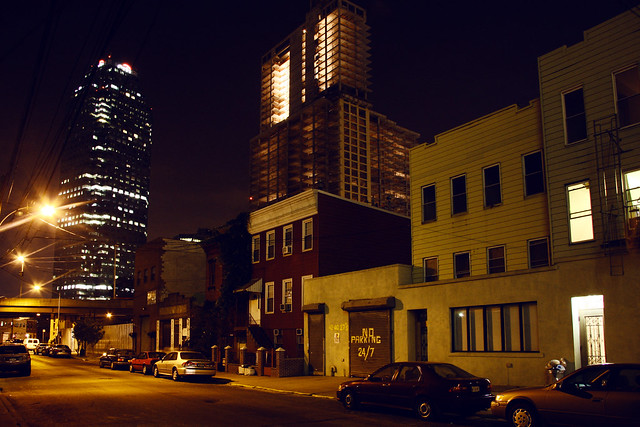(Original neighborhood structures overshadowed by Citi Tower and other large scale construction)
Not in the too distant past, Long Island City was considered to be an industrial and working class neighborhood, but with its excellent access to transit, proximity to Manhattan, and relative affordability, its undergoing rapid transition. One doesn't need to dig very deep to view this transition first hand, just take an N or 7 train to Queensboro Plaza and you can see the high rise structures going up and much investment in public spaces. Public transit options tend to play a significant role in how these neighborhoods develop and its no coincidence that most of the heaviest development is focused in the areas between Court Square and Queens Plaza. Subway access in this area is more accessible than some areas of Manhattan; Court Square (7,E,G,M), Queensboro Plaza (7,N,Q), Queens Plaza (E,M,R), 21st-Queensbridge (F). Development however, is also moving north of the Plaza.
(Queens Plaza at night)
If one were to continue up north past streets like 21st or Crescent Streets, it would be clear the development is in its earlier stages when compared to the neighborhoods southern section. They would see large amounts of light industry like auto repair shops, a large bakery that makes the entire area smell like a hot loaf of bread, and of course, Queensbridge, the largest public housing complex in the United States. One would also notice the large amounts of newer, more affordable, hotels that have been constructed, who's rates can be more than half that of hotels in Manhattan.



No comments:
Post a Comment